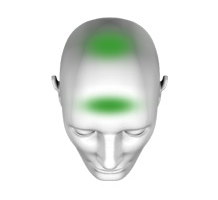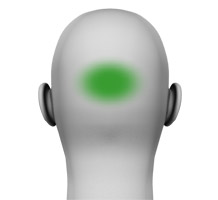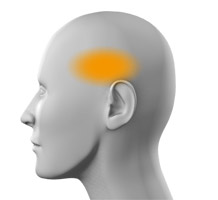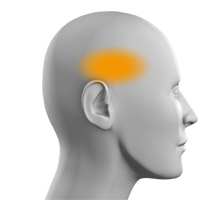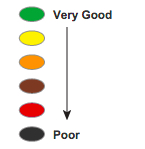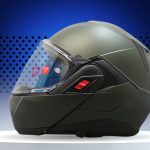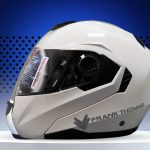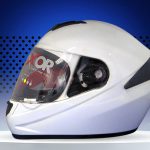Overview
SHARP is a consumer information initiative that was launched by the Department for Transport (DfT) in 2007 following research that revealed real differences in the safety performance of motorcycle helmets available in the UK. SHARP’s objective is to provide:
- clear advice on how to select a helmet that fits correctly and is comfortable, and secondly
- consumers with clear, impartial and objective information about the relative safety of motorcycle helmets available to riders in the UK.
Why was SHARP introduced?
Motorcyclists represent one of the most vulnerable road user groups. Typically in the UK they represent 1% of traffic but 19% of the casualties. Significantly, around 80% of all motorcyclist fatalities and 70% of those with serious injuries, sustain head injuries. Research also shows that, statistically, head impacts are distributed uniformly around the circumference of the helmet.
Research has also highlighted that helmet detachment can occur during the accident sequence with reports indicating a frequency varying from 10% to 14% of casualties. Separately, there was concern that there may be poor knowledge concerning the best practice when choosing a properly fitting helmet.
Research and Evidence base
The SHARP programme is based upon the findings of the European Research activity “COST 327” which reported in 2001 (the most comprehensive study of motorcycle crashes ever conducted in Europe). Two significant recommendations from this study were that:
- The temporal fossa (temple) is particularly vulnerable to injury and helmet design should provide more protection, and
- An increase in helmet energy absorbing capabilities of 30% would reduce 50% of the critical/unsurvivable casualties (AIS 5/6) to moderate/severe (AIS 2‐4).
Building upon this work, the DfT commissioned the Transport Research Laboratory to consider the potential to improve helmets to deliver this higher level of protection. The DfT also undertook a survey of helmets to understand the differences in protection that were available at that time. This revealed variances of up to 70% in the protective capability of different helmets at selected impact sites; reinforcing the need for a scheme, like SHARP, to provide consumers with objective advice.
SHARP impact tests
Each model of motorcycle helmet undergoes 30 linear and 2 oblique impact tests in order to achieve a SHARP rating. To complete these 32 tests, a minimum of 7 individual helmet samples, in a range of sizes, are subjected impacts at three speeds (6, 7.5 and 8.5 metres per second) as follows:
| Helmet | Velocity | Impact type and location on helmet | Impact surface |
|---|---|---|---|
| 1 | 6.0 m/s | Linear impacts to Front, Left, Right, Crown and Rear | Flat anvil |
| 2 | 6.0 m/s | Linear impacts to Front, Left, Right, Crown and Rear | Kerb anvil |
| 3 | 7.5 m/s | Linear impacts to Front, Left, Right, Crown and Rear | Flat anvil |
| 4 | 7.5 m/s | Linear impacts to Front, Left, Right, Crown and Rear | Kerb anvil |
| 5 | 8.5 m/s | Linear impacts to Front, Left, Right, Crown and Rear | Flat anvil |
| 6 | 8.5 m/s | Linear impacts to Front, Left, Right, Crown and Rear | Kerb anvil |
| 7 | 8.5 m/s | Oblique impacts to the Left and Right sides | Abrasive anvil |
For the linear impact tests, helmets are impacted against both flat and kerb shaped surfaces which represent the surfaces likely to be impacted in real world road accidents. The impact anvils are as specified in UN ECE Regulation 22.05. The oblique impact test is carried out to assess the surface frictional properties of the helmet that can lead to rotational acceleration injuries. For this test SHARP follows the requirements of Regulation 22.05 completely.
Given the COST 327 recommendations concerning the benefits of improved energy absorption, SHARP tests at a higher impact velocity (8.5 m/s) than required by both UN ECE Regulation 22.05 (7.5 m/s) and UN ECE Regulation 22.06 (8.2 m/s).
Please view the animation to find out more.
Facial protection (chin guard / lower face cover)
All of the major helmet test standards include a test to determine whether the chin bar on Full‐Face or System (Flip-Front) helmets have sufficient mechanical strength to protect the face and jaw from injury during an impact.
Although it is not included in the overall rating for a helmet, SHARP recognises the importance of this protection. SHARP believes the tests conducted during assessment under UN ECE Regulation 22.05 to be appropriate and compliance with this optional element of the Regulation forms part of the SHARP assessment. Any helmet that has not been shown to deliver the necessary level of protection is identified in the helmet’s entry on the SHARP website with the illustration below.
% scores for System (flip-front) helmets.
For System (Flip‐front) helmets, SHARP also includes a reference to the robustness of the locking mechanism for the chin bar during impact testing. Whilst regulatory standards require an impact test to be performed to the chin guard as part of their approval, no specific consideration is required as to the performance of the locking mechanisms for the face guard of flip front helmets. Given the possible safety effects that could arise from a failure of the face guard locking mechanism on flip front helmets, SHARP provides motorcyclists with a percentage score latch rating alongside the SHARP safety (star) rating so that they make an informed purchasing decision.
The percentage score latch rating relates to the number of times the lower face guard remains fully locked after each of the linear impact tests. For example, if the lower face cover stays completely closed in every one of the thirty impacts the score would be 100% but if it should open on nine occasions, the score would be 70%. SHARP is not currently able to apply an objective measure to the safety effect of a failure of the chin bar locking mechanism and the percentage score is not therefore factored into the safety rating. Similarly, we are unable to quantify the safety difference between a helmet that achieves a score of 63% and one that achieves 90% but clearly the risk of injury increases with lower latch reliability.
Calculation of SHARP safety (Star) ratings
In order to derive the safety rating, the test results are weighted according to the best motorcycle accident data available. This weights the likelihood of impacts occurring to different regions of the helmet, of impacts occurring at different speeds, and of impacts with different surfaces, based upon the accident studies carried out as part of the COST 327 study. This found the side and rear of the helmet to be commonly impacted and a strong correlation between impact location on the helmet and injury. The side of the head was also found to be particularly vulnerable to injury. The weighting of test results during the calculation of the SHARP safety ratings to real world accident data aims to highlight those helmets that will make the most difference to motorcyclist safety.
Calculation of the safety rating is complex so to enable the identification of those helmets likely to offer the highest level of protection, the ratings are expressed as a simple star rating with 5‐stars being the highest and 1‐star the lowest.
A 5-star helmet offers good levels of protection right around the helmet. That’s not to say a lower rated helmet will not provide protection; regardless of its SHARP rating every helmet on sale in the UK must meet at least one regulatory standard, ensuring it offers at least a minimum level of protection.
Our tests have shown that not all helmets offer the same level of impact protection. Motorcyclists can all judge the price, extra features and build quality of a helmet but SHARP provides independent advice on how much protection it can offer in the event of crash – which cannot be assessed at the point of sale.
Impact Zone diagrams
To provide information about the performance of helmets in our tests and in particular those areas where a helmet has performed well or could be considered as lacking protection, an Impact Zone Diagram is included in each helmet data page.
In each diagram, the SHARP test point has been attributed a colour to show the level of performance measured against a flat surface in the high speed test (8.5m/s) against the flat anvil. The images show the performance of the helmet at each test point to give a better understanding of the all-round protection offered by each helmet. For example:
The impact zones have been graded in six colours which are marked as being from ‘Very good’ to ‘Poor’. The boundary for each colour is linked to understanding of the risk of injury established in the “COST 327 Research” (the most thorough investigation of motorcycle crashes conducted in Europe).
Analysis of more than 250 individual accidents was supplemented by further research that reconstructed a sample of those crashes to determine the relationship between the forces experienced by the rider’s brain and the injury received. The impact zone colours are based upon discrete brain acceleration values:
| Green | Peak acceleration up to 275g: the ECE 22.05 test limit at 7.5 m/s. |
|---|---|
| Yellow | Peak acceleration up to 300g: the British Standard 6658:1985 test limit at 7.5 m/s used by SHARP as the maximum permitted value for a 5–Star rating. |
| Orange | Peak acceleration up to 400g |
| Brown | Peak acceleration up to 420g |
| Red | Peak acceleration up to 500g |
| Black | Peak acceleration in excess of 500g. |
Manufacturers are advised of the SHARP rating before it is published and they are able to lodge an appeal if our measured data does not match what they have seen in development or production testing. This process ensures that the SHARP rating is representative of their helmet’s performance.
Awards
In 2013 SHARP was presented with two separate awards in recognition of its contribution to improving the road safety of motorcyclists. SHARP received a Prince Michael International Road Safety Award in November 2013 and was also awarded the FIM (Fédération Internationale de Motocyclisme) annual road safety award in December 2013.
